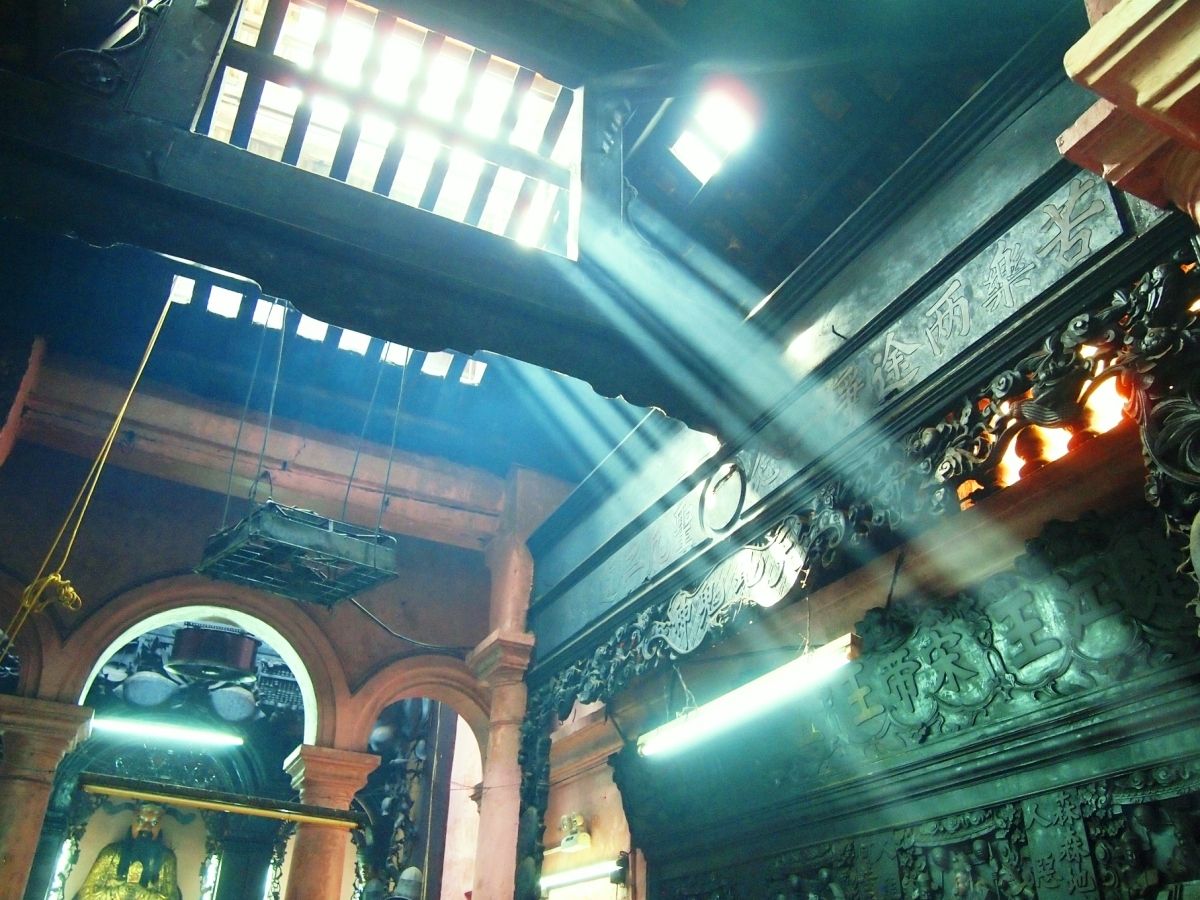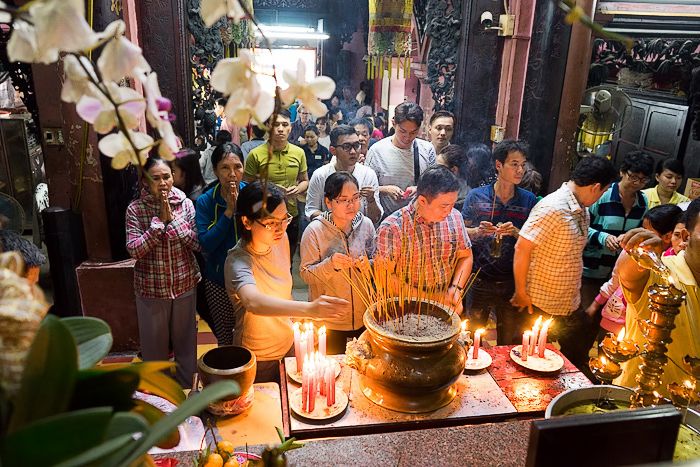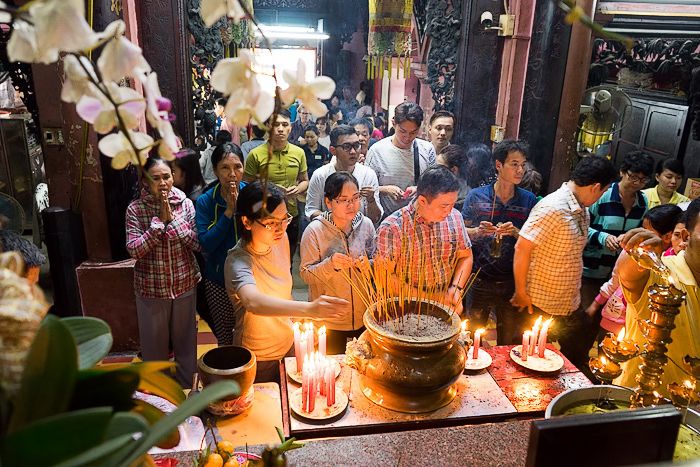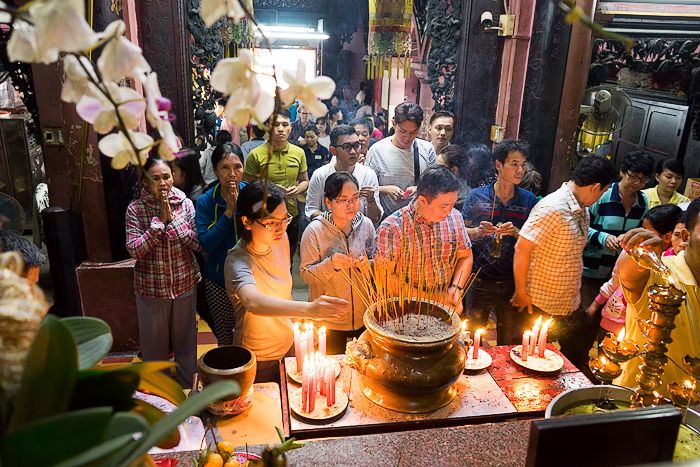Jade Emperor Temple, also known as the Jade Emperor Pagoda, is not just a religious site but a cultural gem that draws visitors from all corners of the world. Whether you seek spiritual solace or are intrigued by its rich history, this pagoda holds a special place in the heart of the city’s cultural and spiritual landscape.
The Historical Significance of Jade Emperor Temple
Jade Emperor Temple, constructed in the early 20th century, stands as a remarkable testament to the architectural brilliance and cultural depth of Vietnam. This sacred structure was established by the Chinese community in Saigon, who sought to create a spiritual haven that would reflect their rich heritage and religious traditions. Initially named Phuoc Hai Tu, the pagoda was dedicated to the worship of multiple deities revered in Taoism and Buddhism. However, it eventually became widely recognized as Jade Emperor Temple, named after its primary deity, the Jade Emperor, known in Vietnamese as Ngoc Hoang. This change in name highlights the central role that the Jade Emperor plays within the pagoda, and it is this devotion that has made the temple one of the most significant spiritual sites in the city.
 Ngoc Hoang Statue at Jade Emperor Temple
Ngoc Hoang Statue at Jade Emperor Temple
At the core of Jade Emperor Temple is the grand statue of the Jade Emperor, or Ngoc Hoang, which dominates the main hall. This imposing figure is not just a representation of a deity but is believed to embody the divine presence of the ruler of Heaven in Taoist mythology. The Jade Emperor is revered as the supreme authority who governs the cosmos, overseeing the lives of both mortals and immortals. His influence extends to all aspects of life, from the natural world to human affairs, making him a central figure in Taoist belief. Visitors to the pagoda come from near and far to pay their respects to the Jade Emperor. They offer prayers, burn incense, and present offerings in the hope of receiving his blessings. Many seek his protection from misfortune, guidance in their personal lives, and blessings for health, wealth, and success. The continued veneration of the Jade Emperor at Jade Emperor Temple underscores the enduring nature of these spiritual practices, which have been passed down through generations and remain a vital part of the cultural fabric of modern Vietnam.
Timeless Elegance: The Fusion of Architecture and Art
The Harmony of Chinese and Vietnamese Styles
Jade Emperor Temple is an architectural marvel that captivates visitors with its intricate design, embodying a harmonious fusion of Chinese and Vietnamese cultural influences. The pagoda’s layout follows the traditional Chinese temple blueprint, beginning with a welcoming central courtyard that leads to the majestic main hall. As you approach the structure, your eyes are immediately drawn to the roof, which is adorned with meticulously crafted carvings of dragons, phoenixes, and other legendary creatures. These carvings are not merely decorative; they hold deep symbolic meanings, representing power, harmony, and protection—key elements in both Chinese and Vietnamese belief systems.
 Intricate Roof Carvings at Jade Emperor Temple
Intricate Roof Carvings at Jade Emperor Temple
The roof itself is a vibrant tapestry of colors, with each tile carefully placed to create a visually striking effect that contrasts beautifully with the surrounding natural landscape. The vivid hues of the tiles—ranging from deep reds to bright greens—add a sense of liveliness and grandeur to the pagoda. This vibrancy is complemented by the detailed woodwork found throughout the structure. Each wooden beam and column is intricately carved, showcasing traditional motifs and patterns that further enhance the pagoda’s aesthetic appeal. The craftsmanship reflects not only artistic skill but also the deep spiritual significance embedded in the pagoda’s design, making it a place of both visual and cultural richness.
The Statues and Altars Within the Pagoda
Upon entering Jade Emperor Temple, visitors are immediately immersed in a rich tapestry of spiritual and artistic expression. The interior is filled with an impressive array of statues and altars, each meticulously crafted and adorned with intricate details, reflecting the deep reverence for the deities and spirits they represent. These statues are not merely decorative; each one embodies a unique aspect of the spiritual world, offering insight into the beliefs and traditions that have shaped the pagoda over centuries.
The pagoda is thoughtfully divided into several chambers, each serving a specific religious purpose. The central hall, the heart of the pagoda, is devoted to the Jade Emperor, also known as Ngoc Hoang, who is revered as the supreme ruler of heaven in Taoist mythology. His statue, resplendent in rich robes and surrounded by offerings, commands a sense of awe and reverence.
 Altars Inside Jade Emperor Temple
Altars Inside Jade Emperor Temple
Beyond the central hall, other chambers house statues of equally significant figures in the spiritual pantheon. One chamber is dedicated to the Goddess of Mercy, Quan Am, whose serene expression and compassionate aura provide comfort to those who seek her blessings. Another chamber is devoted to the God of Prosperity, whose presence symbolizes wealth and good fortune, a figure often sought after by those praying for success and abundance.
In a particularly revered section of the pagoda, visitors will find the statues of the Twelve Mothers, each representing a different aspect of fertility and child-rearing. These figures are especially important to couples who come to the pagoda to pray for children, hoping to receive the blessings of these nurturing spirits.
Jade Emperor Temple – A Place of Worship and Pilgrimage
Jade Emperor Temple is not just an architectural wonder; it is also a living, breathing place of worship. Every day, locals and tourists alike flock to the pagoda to participate in various rituals and practices. The sound of bells, the scent of incense, and the sight of devotees offering prayers create an atmosphere of deep spiritual connection. One of the most common practices at Jade Emperor Temple is the burning of incense sticks, which are believed to carry the prayers of the faithful to the heavens. Additionally, many visitors perform rituals to seek blessings for health, wealth, and success in their endeavors.
 Worshippers at Jade Emperor Temple
Worshippers at Jade Emperor Temple
The Lunar New Year, or Tet, is one of the most important festivals in Vietnam, and Jade Emperor Temple plays a central role in the celebrations. During this time, the pagoda becomes a bustling hub of activity, with thousands of devotees visiting to offer prayers and make offerings. Special ceremonies are held to honor the Jade Emperor and other deities, with the hope of receiving blessings for the coming year. The pagoda is beautifully decorated with lanterns, flowers, and other traditional adornments, creating a festive and joyous atmosphere.
Visiting Jade Emperor Temple – What You Need to Know
Finding Your Way to Jade Emperor Temple
Jade Emperor Temple is conveniently located in District 1 of Ho Chi Minh City, making it easily accessible to both locals and tourists. The pagoda is a short drive from the city center, and visitors can reach it by taxi, motorbike, or even on foot. Upon arrival, you will be greeted by the pagoda’s grand entrance, which is often bustling with activity. Inside, the atmosphere is calm and serene, providing a stark contrast to the busy streets outside. As a visitor, it is important to be respectful of the religious practices and traditions observed at the pagoda. Dress modestly, speak softly, and refrain from taking photographs in restricted areas.
Visiting Jade Emperor Temple
While Jade Emperor Temple is open to visitors year-round, the best time to visit is during the early morning or late afternoon. During these times, the pagoda is less crowded, allowing for a more peaceful and reflective experience. If you are interested in witnessing the pagoda’s role in local festivities, consider visiting during the Lunar New Year or other significant religious holidays. However, be prepared for larger crowds and a more vibrant atmosphere during these periods.
Jade Emperor Temple is a must-visit destination for anyone exploring Ho Chi Minh City. Its blend of history, culture, and spirituality provides a truly enriching experience that will leave a lasting impression on all who visit.
Some tourist attractions in Ho Chi Minh City:

Comment (0)